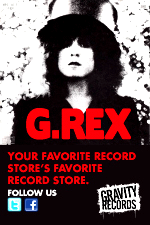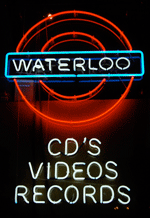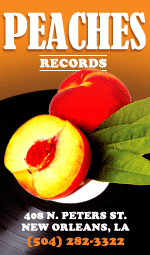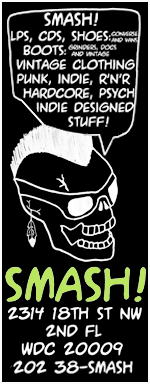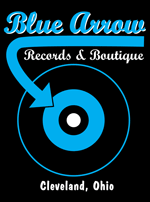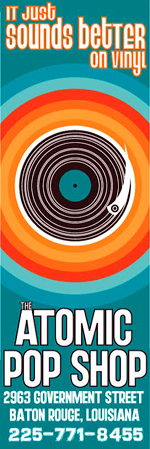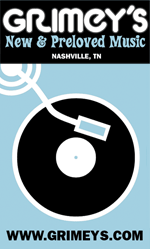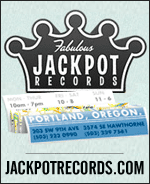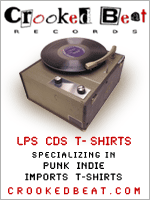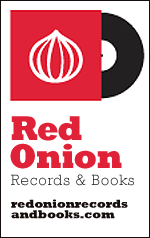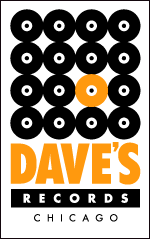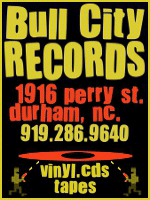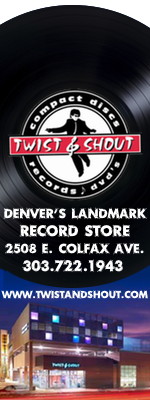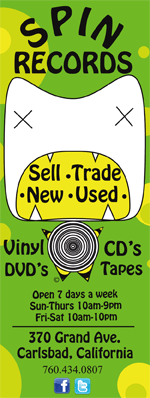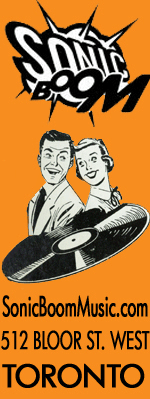
The hit you know, and for a reason (it’s vintage Lennon), the rest you probably don’t know, and for a reason (they vary from fair to middling to awful), and one thing is clear–1973’s Mind Games is the work of a John Lennon who’d lost his way and would never find it again, unless you count 1980’s Double Fantasy, which was tanking until he was assassinated outside the Dakota, at which point grieving critics and fans alike decided (because the story had to have some kind of redemptive ending) that it was a return to form.
Martyrdom (if that’s what you want to call it) is a sure-fire way of winning a Grammy Award for Best Album of the Year. I recommend it to every famous artist on his or her way down.
Recorded as his relationship with Yoko Ono was deteriorating (he’d soon begin his infamous LA “Lost Weekend” with May Pang and constant companion in drunken debauchery Harry Nilsson) and he was being hassled by the U.S. government, Mind Games is a mixture of the personal and the political, but overall the album is a throwaway-heavy muddle.
Rolling Stone’s Jon Landau called it Lennon’s “worst writing yet,” adding that that Lennon was “helplessly trying to impose his own gargantuan ego upon an audience … [that] is waiting hopefully for him to chart a new course.” Another wrote that it “consisted of so-so songs that hardly lodged in the memory.” The least commercially successful Beatle wasn’t moving forward, which is hardly surprising when one considers that he was in a muddle when he wrote its songs—or rather tossed them off in the course of a single week.


 No, what I think about is the scene in 2003’s Festival Express—a documentary about the financially ill-fated but fun for all involved 1970 rock tour that crossed Canada by train—where Rick Danko leads a lounge car full of rock stars (including Janis Joplin and Jerry Garcia) in a wonderfully wasted rendition of “Ain’t No More Cane (On the Brazos).” Danko is so gloriously fucked-up, and his crazed smile and arm-waving performance so full of joy, that it seems the embodiment of the spirit of The Band itself, whose ensemble playing brimmed over with high spirits, camaraderie, and the sheer joy of making music.
No, what I think about is the scene in 2003’s Festival Express—a documentary about the financially ill-fated but fun for all involved 1970 rock tour that crossed Canada by train—where Rick Danko leads a lounge car full of rock stars (including Janis Joplin and Jerry Garcia) in a wonderfully wasted rendition of “Ain’t No More Cane (On the Brazos).” Danko is so gloriously fucked-up, and his crazed smile and arm-waving performance so full of joy, that it seems the embodiment of the spirit of The Band itself, whose ensemble playing brimmed over with high spirits, camaraderie, and the sheer joy of making music.

 The Mott the Hoople story is legendary; they recorded four albums that didn’t do very well, mainly because they were a diffuse mix of sludgy hard rock, irksome folk, Ian Hunter’s Dylanesque musings, and covers of everyone from Little Richard to Melanie to yes, you heard me correctly, Sonny Bono. That said, LP number 3, 1971’s Brain Capers, was a real breakthrough, containing as it did such weird and wonderful numbers as “The Moon Upstairs,” “Death May Be Your Santa Claus,” and that bizarre little ditty “The Wheel of the Quivering Meat Conception,” not to mention a stunning cover of Dion DiMucci’s harrowing but ultimately redemptive heroin confessional, “Your Own Backyard.”
The Mott the Hoople story is legendary; they recorded four albums that didn’t do very well, mainly because they were a diffuse mix of sludgy hard rock, irksome folk, Ian Hunter’s Dylanesque musings, and covers of everyone from Little Richard to Melanie to yes, you heard me correctly, Sonny Bono. That said, LP number 3, 1971’s Brain Capers, was a real breakthrough, containing as it did such weird and wonderful numbers as “The Moon Upstairs,” “Death May Be Your Santa Claus,” and that bizarre little ditty “The Wheel of the Quivering Meat Conception,” not to mention a stunning cover of Dion DiMucci’s harrowing but ultimately redemptive heroin confessional, “Your Own Backyard.”
 Ian Anderson has always been an entertaining and exasperating crank—stand him on one leg like a deranged flamingo and hand him a flute and he will tie your mind into sailors’ knots with his folk-rock swoops, loops, and other assorted paradiddle, that is when he isn’t spouting folksy wisdom and moralistic sermons of the sort you’d expect from the stewed Diogenes permanently welded to the end stool in your local pub.
Ian Anderson has always been an entertaining and exasperating crank—stand him on one leg like a deranged flamingo and hand him a flute and he will tie your mind into sailors’ knots with his folk-rock swoops, loops, and other assorted paradiddle, that is when he isn’t spouting folksy wisdom and moralistic sermons of the sort you’d expect from the stewed Diogenes permanently welded to the end stool in your local pub.

 Since then they’ve continued to release strong album after strong album, and this despite personnel changes including the defections of both the multi-talented Jason Isbell and Shonna Tucker, she of the amazing voice. And have I mentioned they have impeccable taste in covers? Bob Dylan, Tom Petty, Kiss, Tom T. Hall—why, they even cover Warren Zevon’s fiery “Play It All Night Long” and beat him, no sweat piss jizz or blood about it, at his own game.
Since then they’ve continued to release strong album after strong album, and this despite personnel changes including the defections of both the multi-talented Jason Isbell and Shonna Tucker, she of the amazing voice. And have I mentioned they have impeccable taste in covers? Bob Dylan, Tom Petty, Kiss, Tom T. Hall—why, they even cover Warren Zevon’s fiery “Play It All Night Long” and beat him, no sweat piss jizz or blood about it, at his own game.
 Formed in 1971 in Düsseldorf by Klaus Dinger and Michael Rother, both of whom were former members of Kraftwerk, Neu! was one of the founders of Krautrock, utilizing the simplistic 4/4 motorik (i.e., “motor skill”) beat (which Dinger chose to label the “Apache beat”) to propel their songs while dispensing with all kinds of useless stuff like verses and choruses and the like. Meanwhile Rother accompanied Dinger’s drumming with a guitar-produced harmonic drone, utilizing a single chord upon which he would pile overdub upon overdub to emphasize timbral change.
Formed in 1971 in Düsseldorf by Klaus Dinger and Michael Rother, both of whom were former members of Kraftwerk, Neu! was one of the founders of Krautrock, utilizing the simplistic 4/4 motorik (i.e., “motor skill”) beat (which Dinger chose to label the “Apache beat”) to propel their songs while dispensing with all kinds of useless stuff like verses and choruses and the like. Meanwhile Rother accompanied Dinger’s drumming with a guitar-produced harmonic drone, utilizing a single chord upon which he would pile overdub upon overdub to emphasize timbral change.

 The man’s usual mode was high-spirited, and he had a knack for what you could call novelty tunes, but he was also capable of singing about the more lugubrious aspects of life; you know, broken hearts and all that. But I much preferred him at his wildest and woolliest, as did Robert Christgau, who called him “a great crazy,” and said apropos his more saccharine tunes, “He couldn’t sell soap to a hippie’s mother” and “RCA should ban the ballad.” Me, I hadn’t listened to him for years when my girlfriend gave me a truly terrible ‘70s compilation CD redeemed only by R. Dean Taylor’s great “Indiana Wants Me” and Reed’s fantastic swamp tall tale, “Amos Moses,” which is one of the songs on the 2000 best-of compilation, Jerry Reed Visits Hit Row.
The man’s usual mode was high-spirited, and he had a knack for what you could call novelty tunes, but he was also capable of singing about the more lugubrious aspects of life; you know, broken hearts and all that. But I much preferred him at his wildest and woolliest, as did Robert Christgau, who called him “a great crazy,” and said apropos his more saccharine tunes, “He couldn’t sell soap to a hippie’s mother” and “RCA should ban the ballad.” Me, I hadn’t listened to him for years when my girlfriend gave me a truly terrible ‘70s compilation CD redeemed only by R. Dean Taylor’s great “Indiana Wants Me” and Reed’s fantastic swamp tall tale, “Amos Moses,” which is one of the songs on the 2000 best-of compilation, Jerry Reed Visits Hit Row.


 Drug burn-out was the culprit, that and the natural order of the rock creativity; virtually no one continues to make great album after great album—shit, by my accounting, even Bob Dylan did his best work between 1965 and 1967, and that’s if you count The Basement Tapes, which weren’t released until years later.
Drug burn-out was the culprit, that and the natural order of the rock creativity; virtually no one continues to make great album after great album—shit, by my accounting, even Bob Dylan did his best work between 1965 and 1967, and that’s if you count The Basement Tapes, which weren’t released until years later.
 Anyway, I’ve been listening to Minneapolis hardcore kings
Anyway, I’ve been listening to Minneapolis hardcore kings 
 But it sounded great back in 1976, even though I can remember debating with friends over whether Scholz was playing an actual guitar or some synthesized approximation of such, that’s how good his guitar sounded. Me, I loved it when Boston came out, and it still makes me nostalgic because it was the first LP I ever got high to—with my friend Dave beneath the Littlestown Railroad Bridge, and on 8-track no less.
But it sounded great back in 1976, even though I can remember debating with friends over whether Scholz was playing an actual guitar or some synthesized approximation of such, that’s how good his guitar sounded. Me, I loved it when Boston came out, and it still makes me nostalgic because it was the first LP I ever got high to—with my friend Dave beneath the Littlestown Railroad Bridge, and on 8-track no less.













